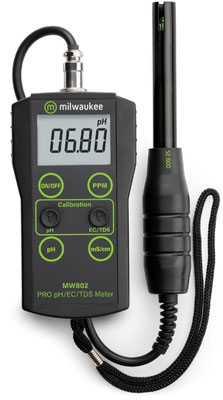It is fairly easy to measure electrical conductivity( EC ), however, this does not invalidate the possibility that mistakes can happen and result in faulty results.
Here are some of the common mistakes made based on the experience of conductivity meter customers.
- Not understanding how temperature affects the measurement.
It is imperative to know that EC measurements are heavily affected by the temperature of the sample you use. For example, the reading of a salt solution of sodium chloride typically increases by 2% for every Centigrade degree of temperature change. Depending on the standard procedure of the lab you are working in, readings may have been temperature compensated or not. It is important to determine the method you usually go about this process.
2. Misunderstanding the temperature compensation function.
When used correctly, the temperature compensation (TC) function will take the sample EC and temperature readings, then calculate and display the conductivity that the sample would be expected to read at the chosen reference temperature, such as 25°C.
If the TC function is turned off on a device like a Milwaukee EC meter, the displayed value is the actual conductivity at the measured sample temperature.
When not using TC, it is especially important to report the sample temperature reading along with the conductivity reading. When using TC, report the EC and the reference temperature.
3. Using elaborate multipoint calibrations
Calibration of the conductivity cell is attained by dictating the cell constant, which the meter then uses to calculate conductivity
when measuring a sample.
A commonly used calibration standard is 0.01M potassium chloride, which gives a conductivity reading near 1410 uS/cm at 25°C. If the
samples cover a large range of conductivities, it is appropriate to measure one or more calibration check samples at the levels of
interest.
Nesvax conductivity meters ensure that you have an easy time understanding how to control temperature changes and achieve accurate reliable data. Our instruments also give you an easy time in calibration so that the instrument is finely tuned to accomplish all your desired needs.

